After finishing cancer treatment, many survivors feel a mix of relief and uncertainty. The constant doctor visits, scans, and treatments are over-but now what? You’re no longer in active treatment, but you’re not quite back to "normal" either. That’s where a survivorship care plan comes in. It’s not just a piece of paper. It’s your roadmap for the years ahead, designed to catch problems early, manage lasting side effects, and help you live well after cancer.
What Exactly Is a Survivorship Care Plan?
A survivorship care plan is a personalized document that two things: it summarizes everything you went through during treatment, and it tells you what to expect next. Think of it as your medical history and future checklist rolled into one. According to the National Academy of Medicine, every cancer survivor should get one. It’s not optional-it’s standard care.The plan has two main parts. The first is the treatment summary. This includes your diagnosis date, cancer type, stage, the exact drugs you received, radiation doses, surgery details, and even clinical trial info. The second part is the follow-up plan. This tells you when to come back for scans, which tests you need, what symptoms to watch for, and how to stay healthy.
For example, if you had Hodgkin lymphoma and got chest radiation, your plan might say: "Get a mammogram every year starting 8 years after treatment." Or if you received anthracycline chemotherapy, you might need an echocardiogram every five years to check your heart. These aren’t guesses-they’re based on decades of research from groups like the Children’s Oncology Group and the American Society of Clinical Oncology.
Why Follow-Up Appointments Matter More Than You Think
It’s easy to skip follow-ups. You’re tired. You’re scared of bad news. You think, "I’m fine, why go back?" But cancer can come back, and late effects can sneak up years later. That’s why sticking to your schedule isn’t just smart-it’s life-saving.Studies show survivors who follow their care plans are 2.3 times more likely to get the right screening tests. And those who do? They have 23% fewer emergency room visits and 18% fewer hospital stays in the first two years after treatment. That’s not just about health-it’s about saving money, time, and stress.
Follow-up visits aren’t just about checking for recurrence. They’re also where you talk about things nobody else asks: fatigue that won’t go away, trouble concentrating, joint pain, nerve damage, or even anxiety that feels heavier than it should. Your oncologist or nurse navigator can connect you to specialists-physical therapists, psychologists, dietitians-who know how to help survivors.
And here’s the catch: many survivors don’t bring their plan to their primary care doctor. Only 41% do. That means your family doctor, who sees you for colds and high blood pressure, might not know you need a heart scan every five years. That’s why your plan needs to be clear, printed, and shared.
Late Effects: The Hidden Costs of Survival
Cancer treatment saves lives-but it doesn’t come without consequences. These aren’t side effects you feel right after chemo. These are late effects, problems that show up months or even decades later.For instance:
- Heart damage from anthracyclines (like doxorubicin) can lead to heart failure years later.
- Radiation to the chest can increase breast cancer risk in women or cause thyroid problems.
- Chemotherapy can cause early menopause, infertility, or nerve damage that makes your hands or feet numb.
- Some treatments raise your risk for new cancers-like leukemia after certain types of chemo.
- Even steroids and hormone therapy can cause bone thinning, weight gain, or mood swings long after stopping.
The Children’s Oncology Group has mapped out 112 specific screening recommendations based on 17 different treatments. That’s not a typo. 112. And it’s updated every two years. For example, if you got more than 250 mg/m² of anthracyclines, you need a heart echo every five years. If you had radiation to the neck, you need a thyroid check annually.
And it’s not just physical. Survivors often face "chemo brain"-memory lapses, trouble focusing, mental fog. Depression and anxiety are common too. These aren’t "in your head." They’re biological side effects of treatment. And they’re treatable.
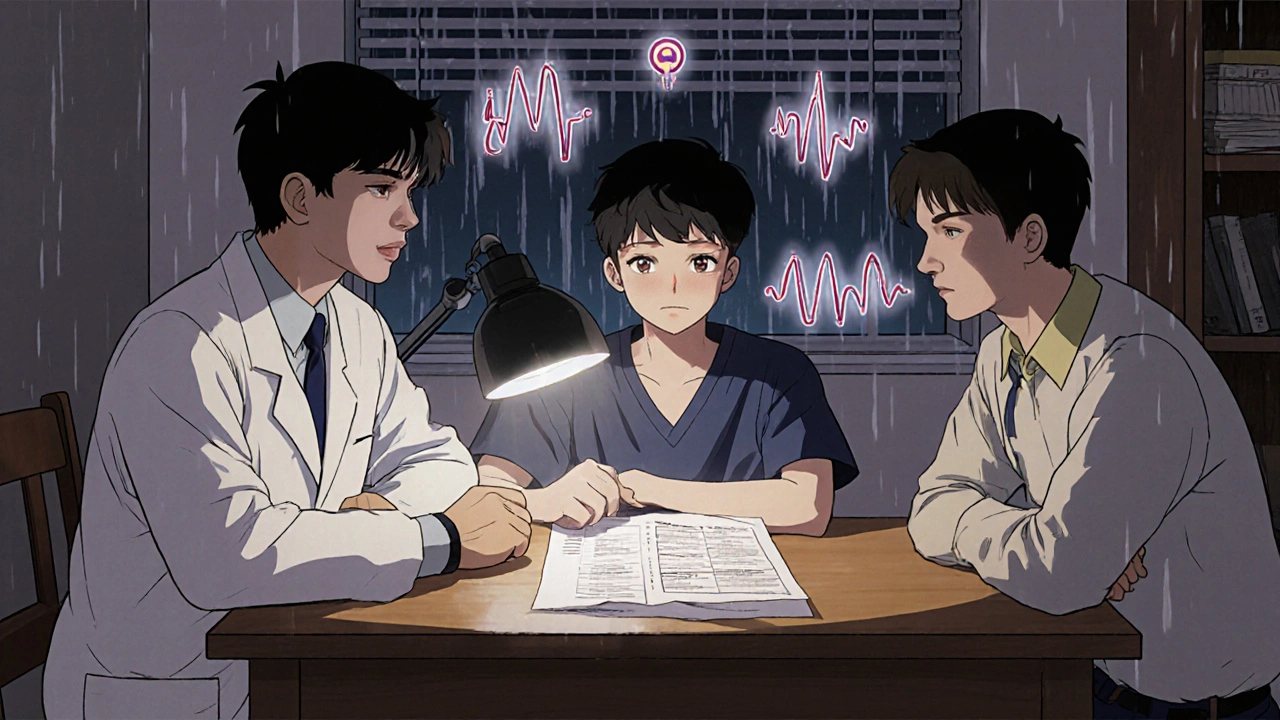
Who’s Responsible for Your Care After Treatment?
This is where things get messy. After treatment, you’re caught between two worlds: oncology and primary care. Oncologists focus on cancer. Primary care doctors focus on everything else. But who handles the long-term stuff?Only 52% of survivorship care plans clearly name who’s responsible for what. That’s a problem. You shouldn’t have to figure it out yourself. Your plan should say: "Your oncologist will monitor for recurrence every 6 months for 3 years, then yearly. Your primary care doctor will manage cholesterol, blood pressure, and mammograms. Your endocrinologist will check your thyroid."
Some centers assign a survivorship coordinator-a nurse or social worker-who stays with you after treatment ends. Others hand you a PDF and say "good luck." The difference matters. Centers with dedicated staff create plans in 45 minutes on average. Without them? It takes longer, and the quality drops.
And if you’re in a community hospital, not a big cancer center? You’re less likely to get a full plan. Only 58% of community centers have formal programs. Academic centers? 78%. That’s a gap in care that shouldn’t exist.
How to Get the Best Survivorship Plan
Don’t wait for your doctor to hand you a plan. Ask for it. Here’s how to make sure you get one that actually helps:- Ask your oncology team: "Will I get a written survivorship care plan before I finish treatment?" If they say no, ask why.
- Make sure it includes: your full treatment history (drugs, doses, dates), follow-up schedule, late effect screenings, and healthy living tips.
- Get a printed copy and a digital version. Save it on your phone and in the cloud.
- Bring it to every doctor visit-especially your primary care provider.
- If you don’t understand something, ask for clarification. No jargon. No assumptions.
There are free tools that can help. The OncoLife Survivorship Care Plan (from Livestrong and UPenn) lets you input your treatment details and generates a personalized plan in minutes. It matches the Children’s Oncology Group guidelines 98% of the time. ASCO also has a free online builder that works in under 10 minutes.

What’s New in Survivorship Care (2025)
The field is changing fast. In 2022, the Children’s Oncology Group added new guidelines for immune checkpoint inhibitors and CAR-T cell therapy-two newer treatments with unique late effects. In 2023, ASCO launched a digital builder that cuts plan creation time in half.Now, some centers are using AI to predict your personal risk for heart damage or secondary cancers based on your treatment and genes. One model got 84% accuracy predicting heart problems after radiation. That’s not sci-fi-it’s happening now.
And there’s a push for EHR integration. Right now, your oncology records and your primary care records often don’t talk to each other. That’s why 67% of hospitals struggle to share your plan. New standards like HL7 FHIR are being tested to fix that.
Soon, you might get alerts on your phone: "It’s time for your heart scan," or "Your blood work shows low vitamin D-schedule a check-up." Wearable tech is being tested to track fatigue, sleep, and heart rate in real time.
What If You Don’t Have a Plan?
If you finished treatment without one, don’t panic. It’s never too late. Start by gathering your records: pathology reports, treatment summaries, scan results. Call your oncologist’s office and ask for a treatment summary and follow-up recommendations.Use OncoLife or ASCO’s free tools to build one yourself. Then, take it to your primary care doctor. Say: "This is what I went through. Here’s what I need to watch for. Can we make sure this gets into your system?"
Even a basic plan is better than none. And if you’re a parent of a childhood cancer survivor? Start planning early. Pediatric centers that begin survivorship planning at diagnosis have 89% success rates. Adult centers? Only 42% do.
Final Thought: You’re Not Done-You’re Just on a New Path
Surviving cancer isn’t the end of your medical journey. It’s the start of a new one. A survivorship care plan isn’t about fear. It’s about control. It’s about knowing what to expect, who to call, and how to protect your health for decades to come.Don’t let confusion, silence, or bureaucracy rob you of the care you deserve. Ask. Demand. Share. Your future self will thank you.
What should be included in a survivorship care plan?
A survivorship care plan must include two parts: a treatment summary and a follow-up plan. The treatment summary lists your cancer type, stage, diagnosis date, all treatments received (chemotherapy drugs, doses, radiation details, surgery), and names of your care team. The follow-up plan includes scheduled check-ups, specific screening tests (like mammograms or heart echoes), guidance on managing long-term side effects, and recommendations for healthy living-such as exercise, diet, and quitting smoking.
How often should I get screened for late effects after cancer treatment?
It depends on your treatment. For example, survivors who received anthracycline chemotherapy above 250 mg/m² need an echocardiogram every five years to monitor heart function. Women who had chest radiation for Hodgkin lymphoma should start annual mammograms eight years after treatment. Thyroid checks are needed yearly if you had radiation to the neck. The Children’s Oncology Group provides detailed, evidence-based guidelines for over 100 possible late effects based on your specific treatment history.
Who is responsible for my care after cancer treatment?
Ideally, your oncology team handles cancer recurrence checks, while your primary care provider manages general health-blood pressure, cholesterol, screenings, and managing side effects. But only half of survivorship plans clearly assign these roles. You need to know who does what. Ask your care team to specify responsibilities in your plan. If they don’t, take the initiative to share your plan with your family doctor.
Why do some survivors never get a survivorship care plan?
Many hospitals lack staff or time to create them. Only 61% of cancer centers have dedicated personnel to build these plans. Others struggle with electronic health record systems that don’t talk to each other. Reimbursement is also an issue-Medicare pays just $127.50 per plan, which covers less than 40% of the actual cost. As a result, only 42% of survivors receive a complete plan with both treatment summary and follow-up recommendations.
Can I make my own survivorship care plan if my hospital doesn’t give me one?
Yes. Free tools like OncoLife (from Livestrong and the University of Pennsylvania) and ASCO’s Survivorship Care Plan Builder let you input your treatment details and generate a personalized plan in minutes. These tools use evidence-based guidelines and match expert recommendations with over 95% accuracy. Print it, save it on your phone, and bring it to every doctor visit.
Are survivorship care plans only for adults?
No. In fact, pediatric cancer survivors often benefit the most. The Children’s Oncology Group has the most detailed, long-term guidelines because childhood treatments can affect growth, development, and organ function for decades. Pediatric centers that start survivorship planning at diagnosis have 89% success rates in delivering comprehensive care. Adult centers lag behind, with only 42% starting early. Survivors of childhood cancer need lifelong monitoring.

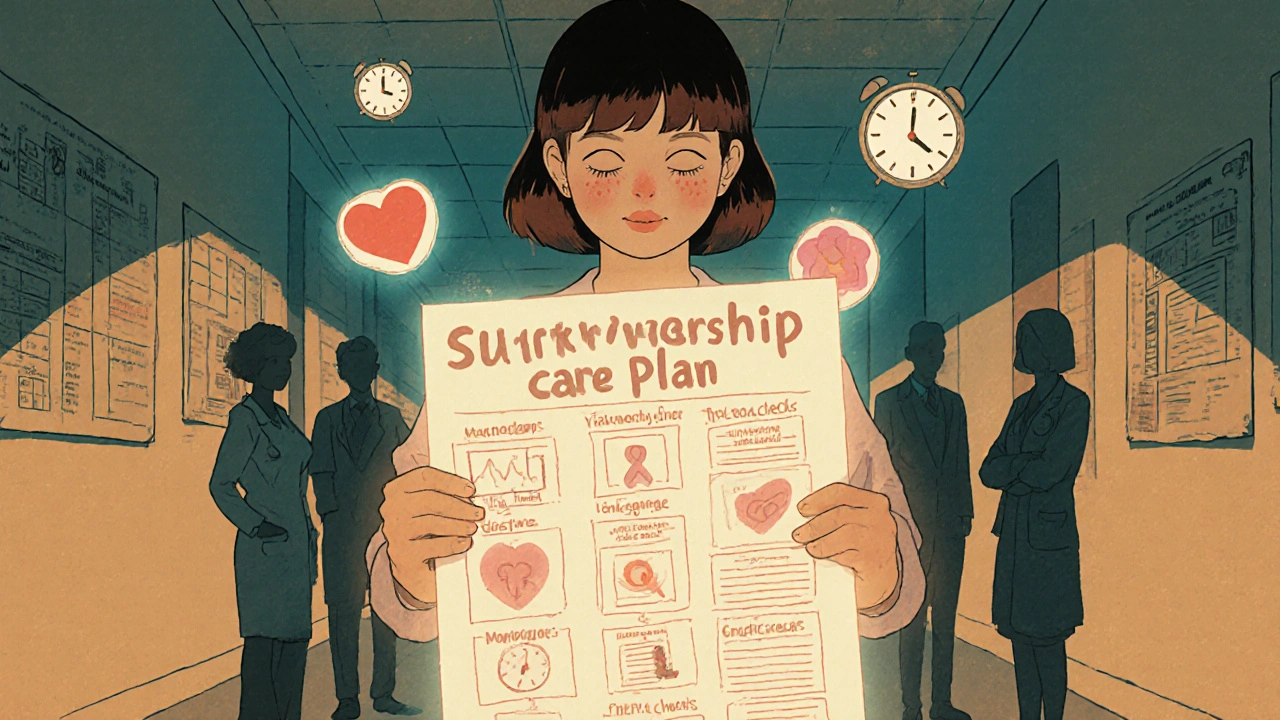


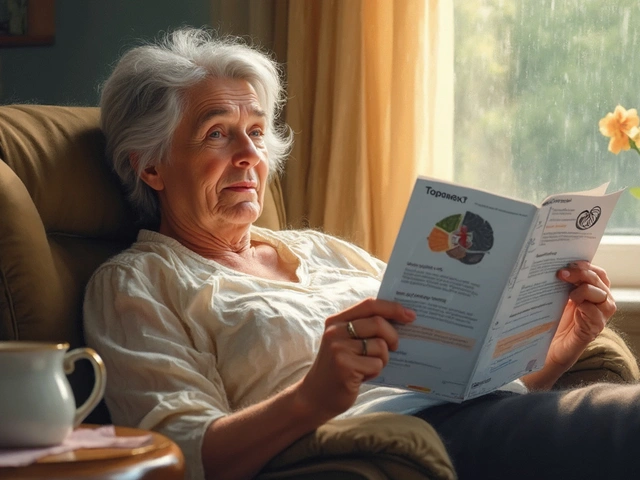
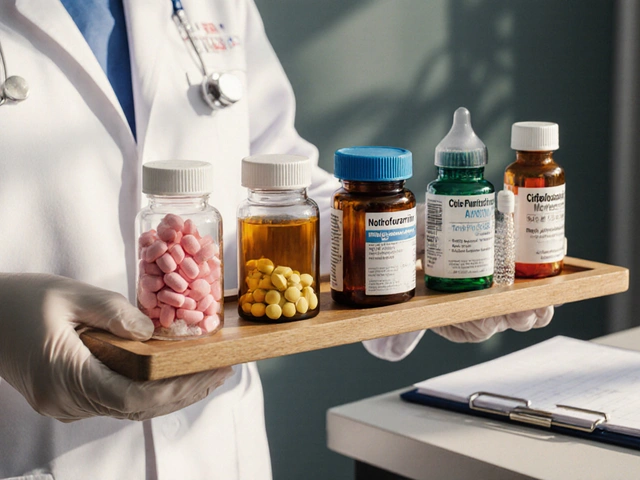
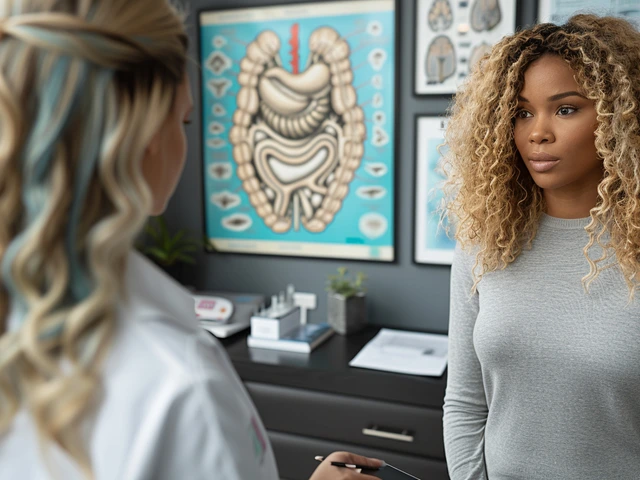

Bro i got my plan after lymphoma and honestly it was just a pdf with 3 bullet points. No one told me i needed a heart echo every 5 years until my primary doc found out from my old chemo records. Now i’m scared to even breathe without checking if i’m gonna die of cardiomyopathy. This shit needs to be mandatory, not a luxury.
Respectfully, as someone who works in oncology logistics, I must emphasize that survivorship care plans are not merely administrative formalities-they are clinically essential frameworks grounded in evidence-based guidelines from ASCO and COG. The absence of standardized implementation in community hospitals is a systemic failure that demands institutional reform and policy intervention.
Okay but have you heard about the Big Pharma conspiracy? 😏 They don’t want you to know that late effects are *engineered* to keep you coming back for more scans, meds, and ‘survivorship programs’ that cost $2,000 per visit. 😷💉 The FDA approves these guidelines because they’re funded by oncology conglomerates. Your ‘echocardiogram’? Probably unnecessary. Your ‘mammogram’? A radiation trap. 🤫👁️🗨️
Let’s be real-the whole survivorship industry is a glorified guilt-trip machine. You survive cancer? Congrats. Now here’s a 47-page PDF with 112 screening checklists, a therapist referral, and a yoga coupon. Meanwhile, your insurance dropped you after 18 months and your boss thinks you’re ‘done’ because you’re not puking anymore. They don’t give a shit about your ‘late effects’-they just want you to shut up and go back to work.
I’m a nurse navigator and I’ve helped build over 300 care plans. I can tell you-this stuff saves lives. One patient, 32, had Hodgkin’s at 18, got chest radiation, and skipped her mammograms for 7 years because ‘she felt fine.’ Turned out she had early-stage breast cancer. Caught it because she brought her plan to her PCP. That’s not luck-that’s structure. Please, if you have a plan, PRINT IT. Put it in your wallet. Text it to your mom. Don’t let bureaucracy steal your second chance. 💪❤️
Asking for your plan isn’t being difficult-it’s being responsible. You survived cancer. Now protect the life you fought for. Get the paper. Share it. Demand clarity. No excuses. Your future self is watching. And she’s tired of waiting.
Wow another cancer guilt trip. You think I don’t know what a survivorship plan is? I’ve seen the brochures. They’re basically ‘how to be a medical zombie’ manuals. You think your doctor actually reads this stuff? Nah. They’re too busy billing and scrolling TikTok. Just live your life. Stop obsessing over scans and ‘late effects.’ You’re not a lab rat.
Is survival even a goal, or just a byproduct of a medical-industrial complex that commodifies trauma? We treat cancer like a glitch to be patched, not a rupture in the human condition. Your ‘care plan’ is just another algorithmic attempt to normalize the unnormalizable. You’re not a patient. You’re a narrative. And narratives get edited.
I lost my sister to ovarian cancer last year. She never got a plan. They said she was ‘in remission’ and handed her a pamphlet on ‘healthy living.’ She died because her liver failed from chemo and no one checked. I’m not mad. I’m just… tired. This system doesn’t care about the people who live. It cares about the ones who die because it makes headlines. We need to stop treating survival like a bonus round and start treating it like the main event.
While the conceptual framework of survivorship care plans is commendable, the operational implementation remains inconsistent across jurisdictions. I am particularly concerned about the disparity between academic and community-based institutions, as referenced in the data. A standardized, interoperable digital infrastructure, compliant with HL7 FHIR, is not merely advisable-it is an ethical imperative. Without such integration, equity in post-treatment care remains aspirational rather than actualized.
why do we even need a plan? i mean… you either live or you don’t. all these scans and tests just make you paranoid. i got cancer, beat it, now i’m just gonna drink beer and watch anime. my heart will do what it’s gonna do. 🤷♂️
Let’s be honest-this entire survivorship movement is just a performative gesture for wealthy, well-insured patients. The rest of us? We get a text from the oncology office saying ‘we’ll call you if anything’s wrong.’ That’s not care. That’s neglect wrapped in a PowerPoint. You think OncoLife helps the guy working two jobs with no insurance? Please. This is just cancer capitalism with a heart emoji.
My doc gave me a plan and I threw it in the trash. Then I found out I had a 20% higher risk of thyroid cancer from my radiation. Now I’m back. You’re right. I should’ve listened. Don’t be me.
Y’all are missing the POINT. The real tragedy isn’t the missing scans-it’s that survivors are expected to be grateful for crumbs. We were thrown into a war zone, given a map that’s 70% wrong, and then told to ‘stay positive’ while our bodies betray us. This isn’t a checklist. It’s a cry for dignity. And if your hospital can’t give you that? Find one that will. Or fight them. You’ve already survived cancer. What’s one more battle?